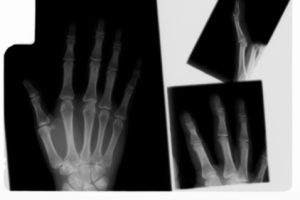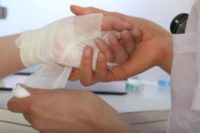 Regardless of the situation, it is always important to protect your hands and fingers. This is the part of the body that is most likely to be injured at work. Even with glove improvements and campaigns to increase hand and finger safety, it is still essential to have a hand and finger safety program readily accessible and widely distributed.
Regardless of the situation, it is always important to protect your hands and fingers. This is the part of the body that is most likely to be injured at work. Even with glove improvements and campaigns to increase hand and finger safety, it is still essential to have a hand and finger safety program readily accessible and widely distributed.
According to the Centers for Disease Control and Prevention (CDC), hand injuries account for 1,080,000 emergency department visits by workers per year in the United States. In fact, as part of the analysis done on body parts injured in heavy industry, the hand was the number one body part that was injured.
The hand also sits very high on the list of body parts that result in recordable injuries. This means that hand/finger safety enhancement can improve your recordable rates, which can improve the safety culture and the bottom line all at the same time.
Enhance your hand/finger safety by implementing a hazard recognition and assessment program. This program should clearly identify pinch points, hot spots, rotating equipment and automated machinery. Likewise, the plan should include engineering controls — guarding, safety switches, etc. — that can also prevent incidents.
Additionally, you need to consider the proper use, care and limitations of personal protective equipment (PPE) when preparing your plan. There are restrictions to what protective gear can do and this needs to be outlined in the overall safety program.
Finally, focus on fighting complacency. We often assume people know how to take care of their hands. However, incident analysis indicates that isn’t always the case. Promote positive behavior and reminder workers of hand/finger safety importance.
Dennis Truitt is the vice president of account management at PICS. Truitt offers more than 20 years of industrial health, safety and environmental management experience. Prior to joining the PICS team, he held several senior-level health and safety positions in the refining industry.




